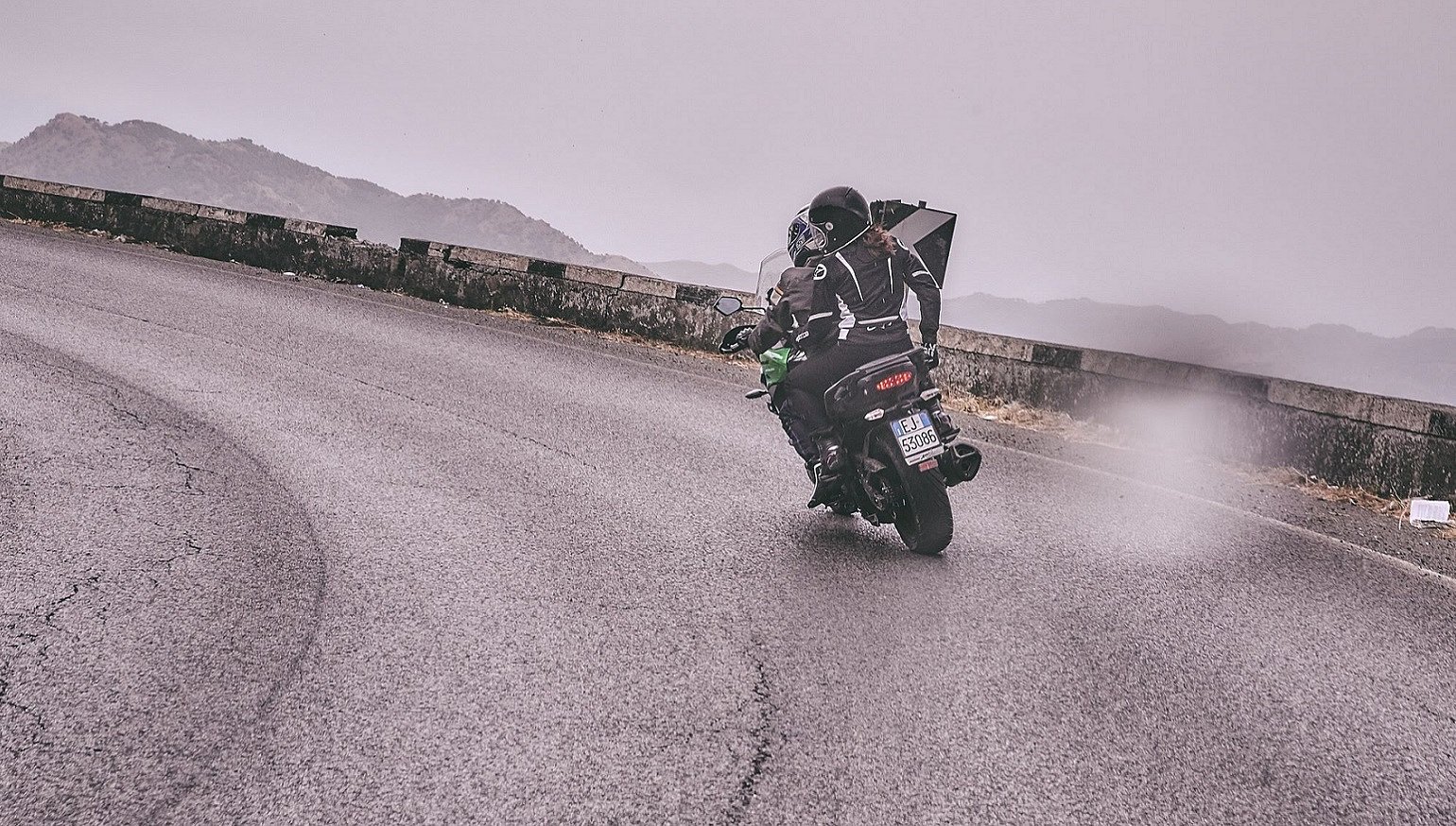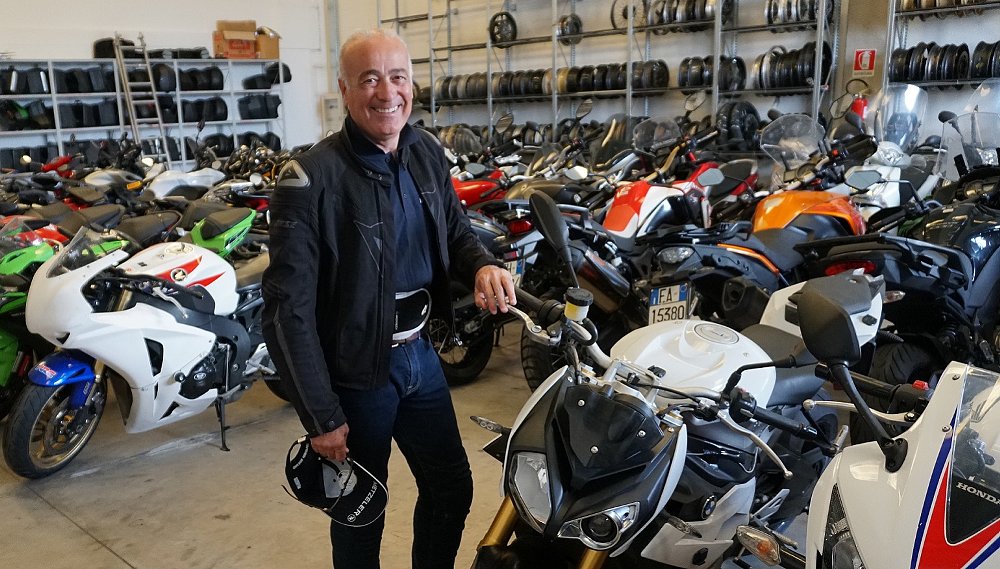After spending a morning with Pirelli’s research and development brains in the lab under the Milan headquarters, we flew south to Sicily, to spend a day with the R&D wrists. In Italian, Pirelli calls this department, "Sperimentazione Moto." In English, they translate that into the less sexy phrase, "outdoor testing."
The plan was for us to meet up with Salvo Pennisi (he runs outdoor testing) and a few of his professional test riders — most of whom have diverse racing resumes — for dinner at our hotel. The next morning, we’d ride one of their favorite roads, up Mt. Etna, which is an active volcano. The route climbs from sea level to about 6,000 feet, the highest point reachable by paved roads. From there we’d drop back down to visit outdoor testing’s base of operations, which is located in the charming coastal city of Giarre.
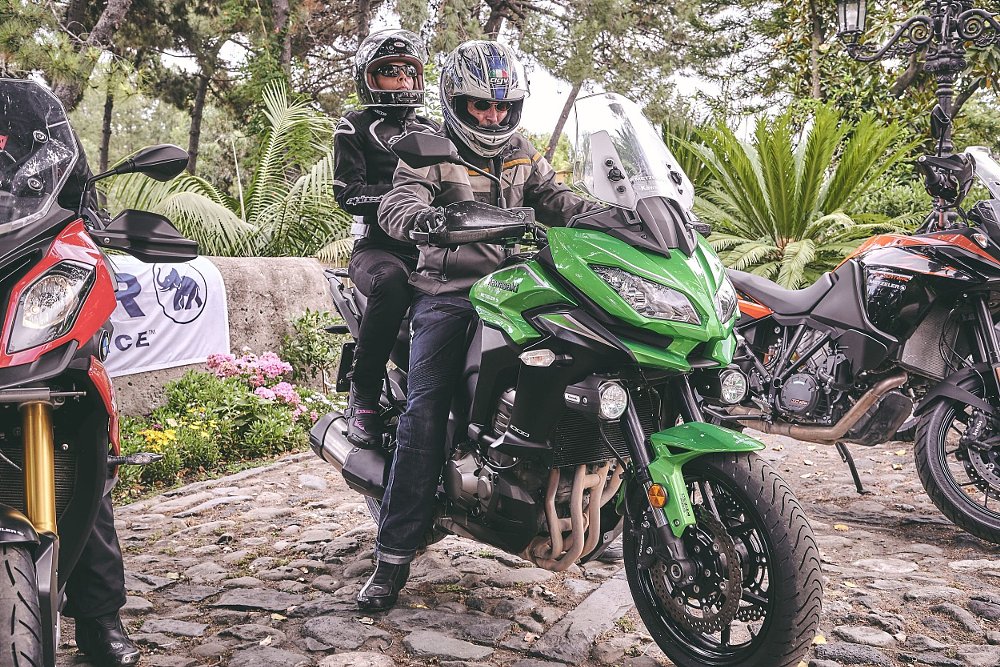
I was careful to tell Salvo that I was traveling with my wife, who would be riding pillion with me. It was a vacation for her — not a tire test! For her part, Mary had just read my review of the MV Agusta Turismo Veloce Lusso. I took pains to reassure her that this was just a ride, not some traffic- and death-defying test. Salvo assured us that he completely understood.
Pirelli had pulled a few bikes from its test fleet, including a BMW R 1200 GS, a Honda Africa Twin, and a BMW S 1000 XR; I opted for a Kawasaki Versys 1000, which seemed like a tractable, user-friendly option with relatively low, comfy seating for two.
I should have known. We were barely out of the hotel gate before I realized that Pirelli’s pros have a different notion of a chill ride than Mary does. I’ll let her tell the story of the ride over Mt. Etna, but I’ll point out that it did include a short section of single-track through a dry creekbed, and an over-the-boots water crossing — definitely a new experience for me when carrying a passenger on something that was essentially a street bike on street tires!
View from the back seat
Mary: At breakfast, Salvo asked if I’d like to ride in the van with the photographers. No, no, Mark had assured me we would be riding “tranquilo.” That idea was quickly dashed as one of the riders ran to his bike, literally leapt onto it, and raced off.
From the moment we pulled out of the hotel, I felt like we were in an action movie. Up steep mountain roads, passing cars between lanes that I wasn’t sure were even made for a single car, never mind splitting two-way traffic. Helmets bumping, I quickly had to figure out how I was going to stay on the bike. Butt in the seat, breathe, heels down; I tried to recall my old horseback riding lessons! Whether that worked or not, it helped calm me down and I didn’t fly off!
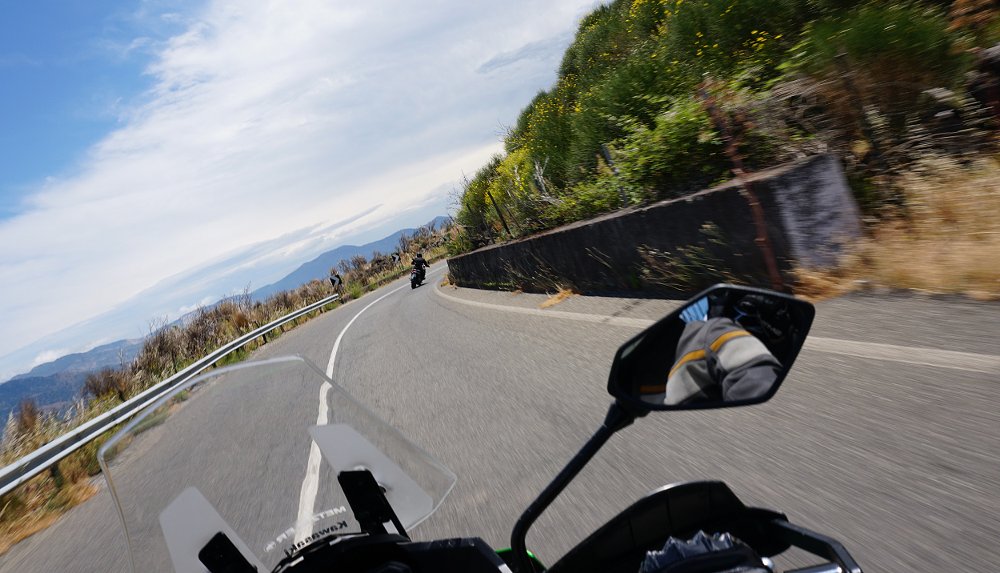
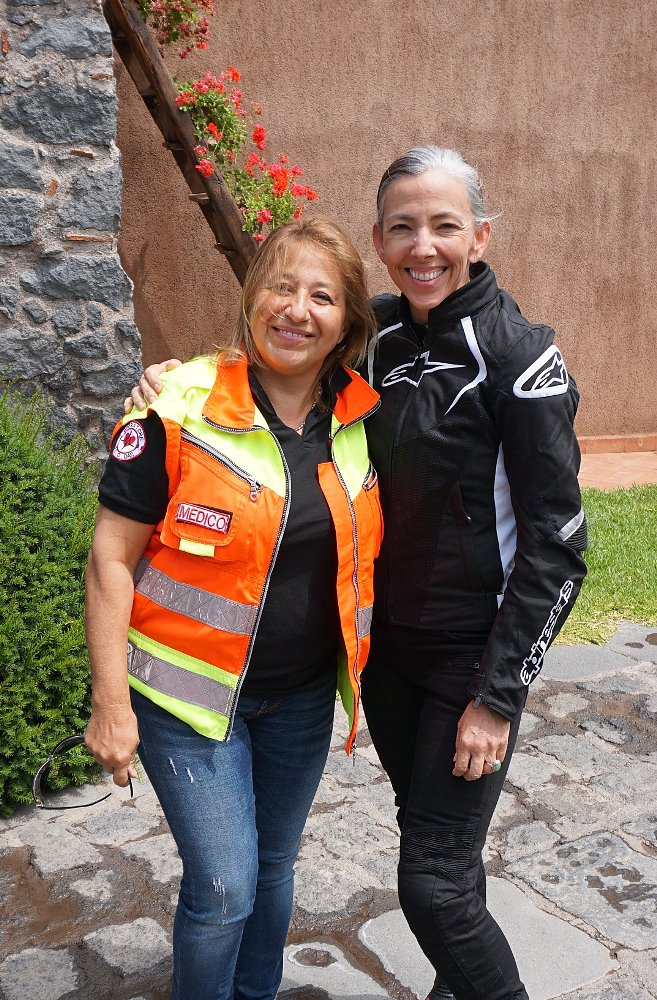
At the first stop, I realized that Pirelli even had an ambulance crew strategically positioned along the route. I’m not sure if that made me feel better or worse as we accelerated to 150 kilometers an hour in between hairpin curves!
Half way up Mt. Etna, we stopped for a coffee — as is the Italian way. After all, it had been at least an hour since our breakfast feast, so it was time for a hearty snack of croissants, cheeses, fruits and meats. Again, Salvo asked if I wouldn’t be more comfortable in the van as the next section involved riding through what he called the "ghost tunnels." In retrospect, I now realize he was making a suggestion!
I didn’t know what "ghost tunnels" meant, but it seemed to be an abandoned railway line; no tracks, just pink dusty ground and stones. At one point the road dropped out completely and Mark got me to climb off and scramble to the other side of a dry wash, while he carefully rode the Kawasaki across. The next surprise was entering a dark tunnel only to find it was partly flooded.
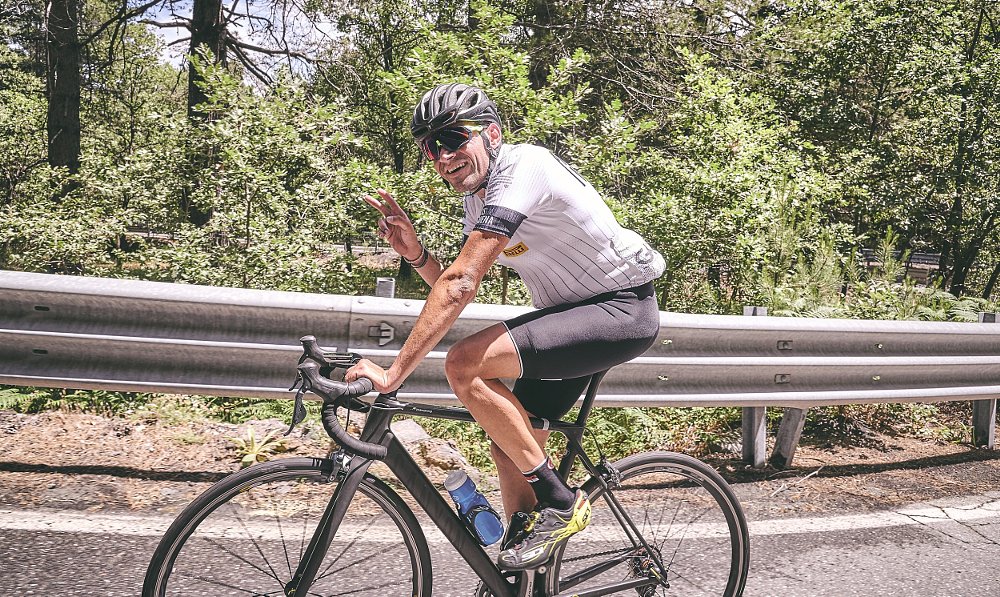
On the route we passed through lava fields from Etna’s last eruption, and encountered Pirelli bicycle test riders — I thought the motorcycle testers looked fit! Finally, we made it to our lunch high on Mt. Etna, where we were treated to mountains of fried vegetables, pasta and sweets. I wished I had been riding the bicycles, just to burn it off.
Mark now returns you to our regular coverage
Outdoor testing is based in a nondescript 30,000-square-foot warehouse, shop, and office on the outskirts of Giarre. The only hint that it was a little more special than the neighboring businesses was the armed security guard at the roll door.
The ground floor is mostly taken up by three big rooms: a garage for the 100 to 120 motorcycles that comprise the test fleet at any given time; a workshop with several lifts and, of course, a bunch of mounting and balancing machines; and a warehouse where tires await testing. Test riders have a locker room down there, too.
Upstairs, there are offices and meeting rooms. It’s a pretty lean operation, considering that there are a total of 36 full-time employees (32 staff and four consultant riders.)
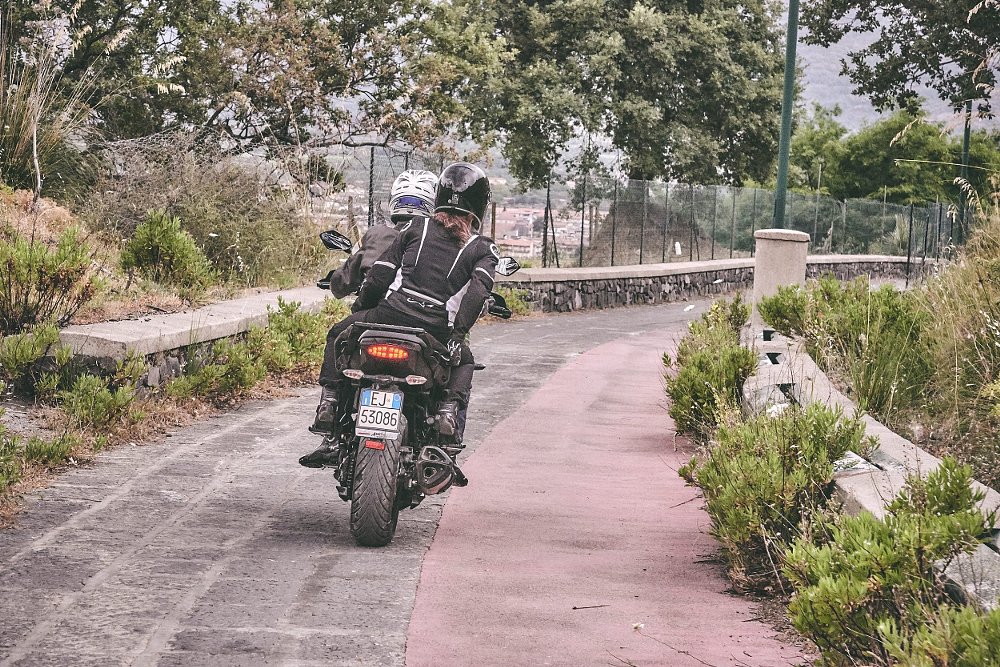
The outdoor testing operation is based in Sicily because it offers year-round riding weather and a remarkably diverse range of roads and terrain. If you’re a professional tire tester, you think of "asphalt" the way the Inuit think of snow; it’s not one thing, there are many, many different kinds of it. The roads we’d ridden in the northeast mountains are remarkably grippy, for example, because they’re made with asphalt and abrasive volcanic gravel. But the roads in the southern and western parts of Sicily use limestone, and offer a much lower coefficient of friction. Salvo told us that a German university had done a study and concluded that at least 85 percent of the road surfaces known to exist anywhere in Europe could also be found somewhere on the island.
The Giarre operation takes the lead testing role for all Pirelli and Metzeler tires under development, and has the final say on quality control testing from all factories (although each factory around the world also maintains a small testing department of its own for QC purposes).
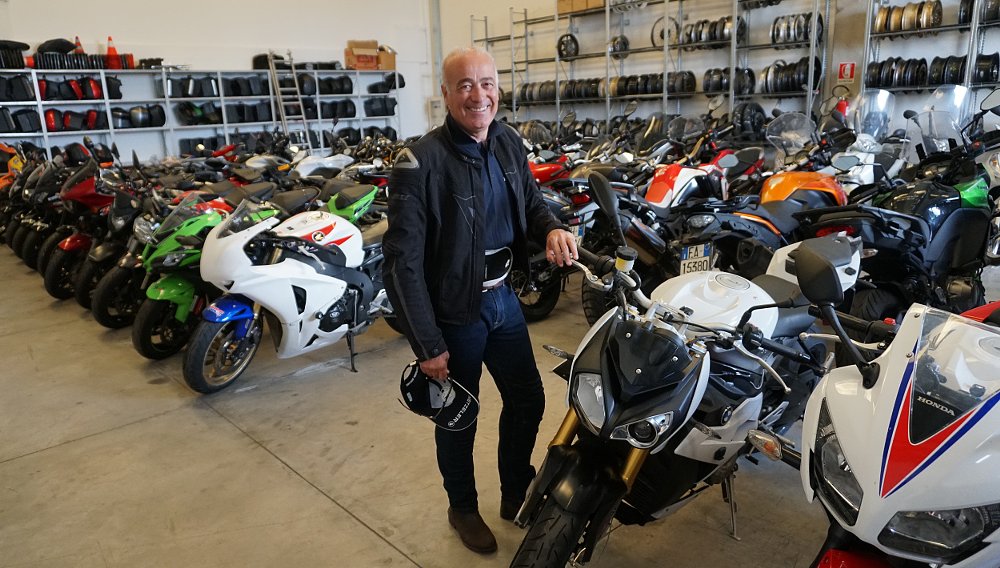
Before showing us the bike storage room, Salvo quickly scanned it to make sure there were no manufacturer prototypes in open view, because the team is also responsible for working with motorcycle manufacturers when developing new OEM fitments. Pirelli’s testers do the initial development of tires for new bikes, but the motorcycle companies fly in their own test riders for final approvals.
That amounts to a staggering testing load, which is divided among two teams of testers who specialize in either "mileage" or "behavior" testing. This year, they’ll test a total of about 14,000 tires, ride about a million kilometers in wear tests, and file about 9,500 handling reports ("comportamento," in Italian).
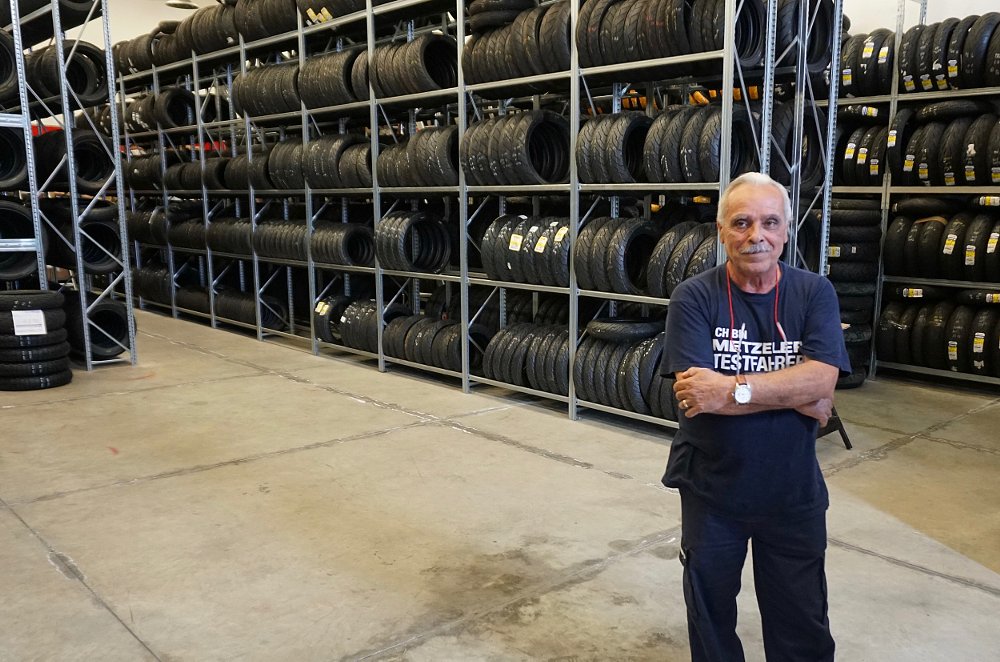
For each handling report, riders rate tires on a scale of one to five, across about two dozen subjective traits, such as stability under hard braking, predictability of turn-in, edge grip, etc.
Testers are rarely asked to rate a tire in absolute terms; most tests are comparative. So, for every type of bike and tire (say, a big adventure bike being ridden on 95 percent asphalt and five percent unpaved roads), they’ll identify a tire that, in their opinion, is currently the best option. That reference tire, whatever it is, is assigned "four" across all behavior characteristics and the new tire is compared to the reference tire.
Test riders’ subjective impressions are buttressed by full data acquisition; there are two guys whose only jobs are logging and analyzing data. Occasionally, they pull it directly off a test bike’s IMU (the new Yamaha YZF-R1, for example), but most of the time, data is captured on Pirelli’s own boxes, which are wired into the test mules.
When a new tire emerges from those tests as a best choice, it becomes the new baseline and the scale’s reset to "four" across the board.
Of course the testers don’t just go out on random rides. Comparative evaluations are made on specific test routes. Salvo’s department offers Pirelli’s R&D group (and OEMs) a menu of specific rides, one of which was the route we’d just ridden, over Mt. Etna. Honda and BMW are among the manufacturers that also insist on their own test protocols. They measure tire characteristics that can only even be labeled in the Japanese or German language, so the Pirelli guys apply those terms when preparing reports for those customers.
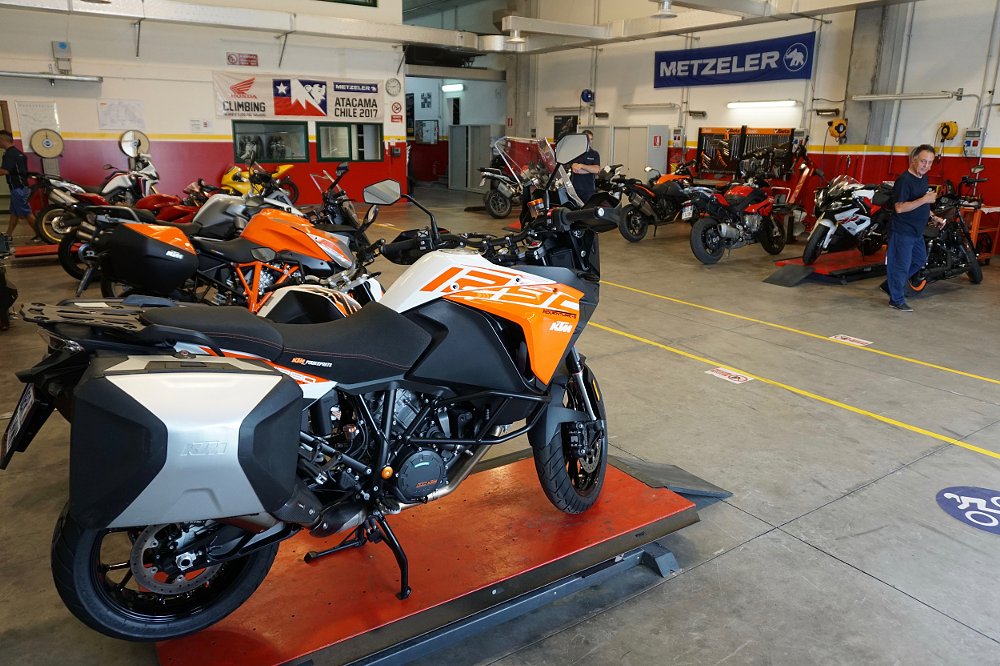
Pirelli testers’ road rides are pretty spirited — although Salvo assured us they ride only at a pace acceptable to the local police and other road users. When they need to ride more aggressively, they have access to a variety of closed-course facilities nearby.
They do a lot of testing on two Sicilian tracks. Pergusa is a fast, old-school track built around a lake. Its long straights and fast turns allow for speed testing. Pergusa’s layout is, ironically, also well suited to testing lower-powered bikes, Salvo said, “Like, Harley-Davidsons, or scooters,” that need a long run to reach top speed.
Racalmuto is a shorter layout that Salvo said was “like Willow Springs.” It’s a track they use when testing race and hyper-sports compounds.
High-speed blistering and chunking tests are carried out at the famed Nardo testing base, which is located in Puglia, not far away on the Italian mainland. Nardo is owned by Porsche, but it is regularly rented by other manufacturers and Pirelli maintains a permanent garage there. Nardo’s best known for its parabolic, eight-mile, circular track. You can lap it continuously at speeds of up to 150 miles per hour with completely neutral steering. Pirelli testers routinely do long runs at up to 185 miles per hour on the ring, at which point they’re at the top of the banking and carrying some lean angle, but still on the meat of the tire. Salvo told me, “It’s one thing to go that fast for a few seconds at the end of some straightaway, but it’s quite different to go that fast for minutes at a time; you really have time to think about what could go wrong.” (Author’s note: No shit.)
Nardo also offers a large number of other surfaces and configurations, including a 10-kilometer stretch of sand they use to test tires for high-speed desert rallies, like Dakar and Pharaohs. Although Salvo downplayed the risks associated with high-speed testing, he admitted that one reason they like using Nardo is that it has such a well equipped and drilled emergency team, with a helicopter ambulance on station.
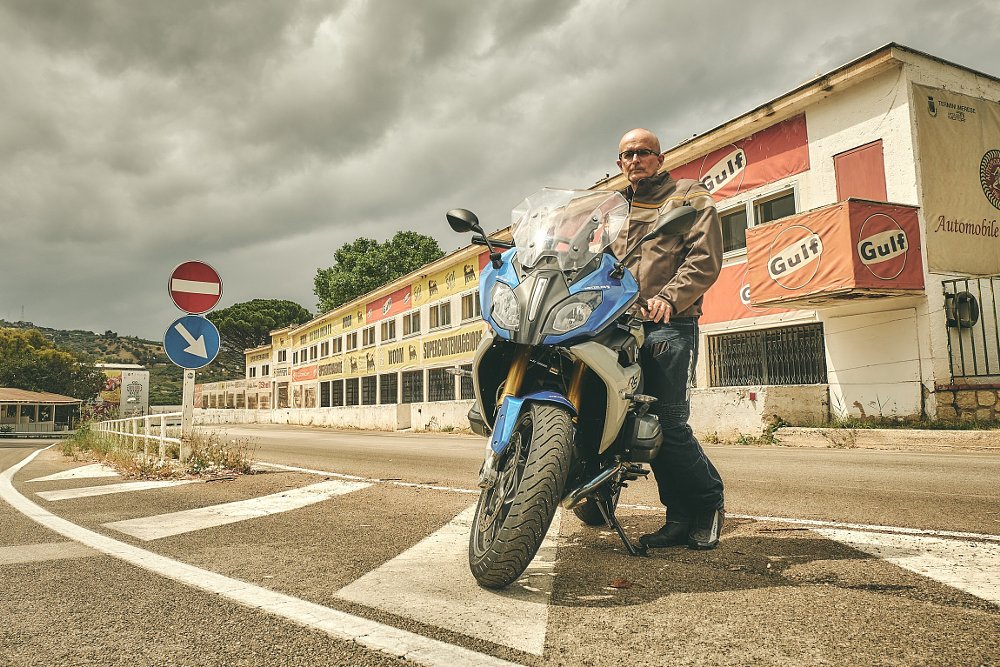
A significant amount of wet testing is still conducted at Pirelli’s original test facility, Vizzola-Ticino, up near Milan. That facility can be flooded at will and includes a round skid pad with rings of different pavement, including a surface that’s as slick as ice when wet.
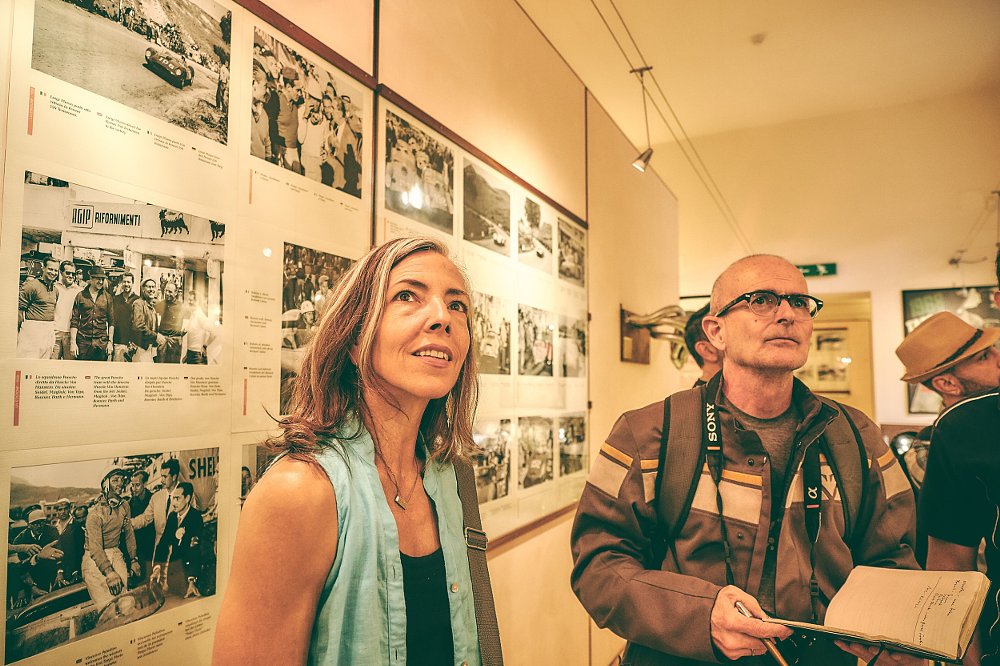
Pirelli has manufactured tires in Brazil for almost a century, dating back to the days when all tires were made of natural rubber. The company enjoys a large market share in South America, and one of the investments they’ve made in Sumaré (near São Paulo) is a precise copy of the Vizzola-Ticino test track. It’s useful because in the winter it’s often near freezing in Milan. That means the outdoor testing group can test cold/wet and warm/wet performance at the same time. The company has also just completed a massive new test facility at Elias Fausto, also in the state of São Paulo. If you can believe it, it includes a 1:1 scale replica of the Estoril MotoGP layout!
U.S. testing, including some specific hot-weather testing, takes place at a pair of proving grounds near Phoenix. One of the tracks they use is owned by Chrysler, another by Volvo. Last but not least, the tires Pirelli supplies to the Superbike World Championship are often tested on the tracks they’ll be raced on. Suffice to say that even though Sicily offers an incredible range of great riding, the professional riders of the outdoor testing department also rack up a lot of air miles, in addition to a million on-road kilometers in pursuit of better tires.




